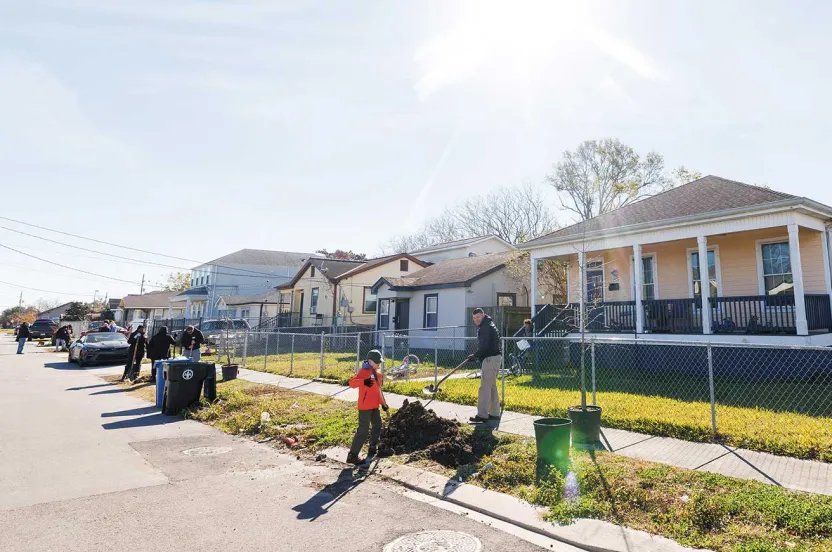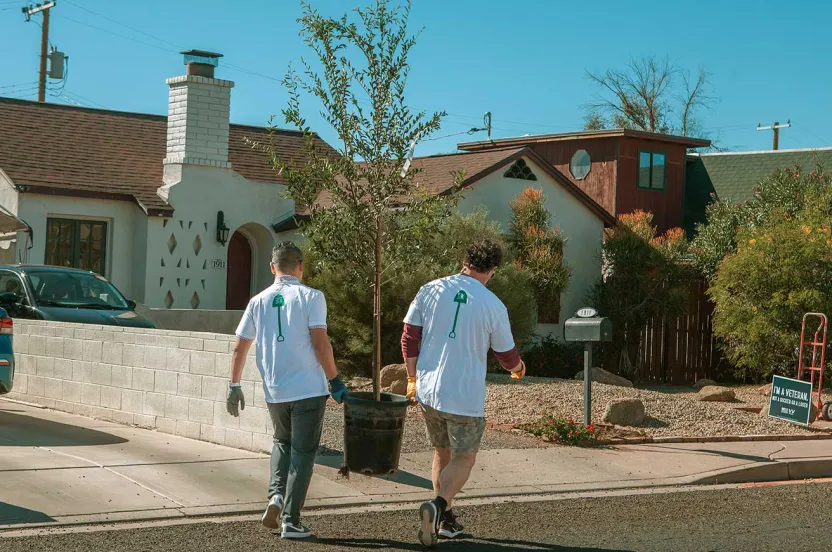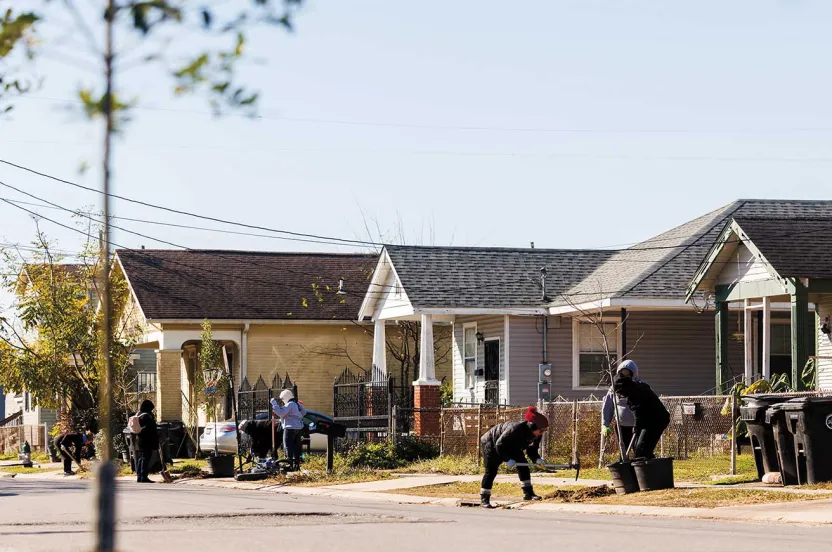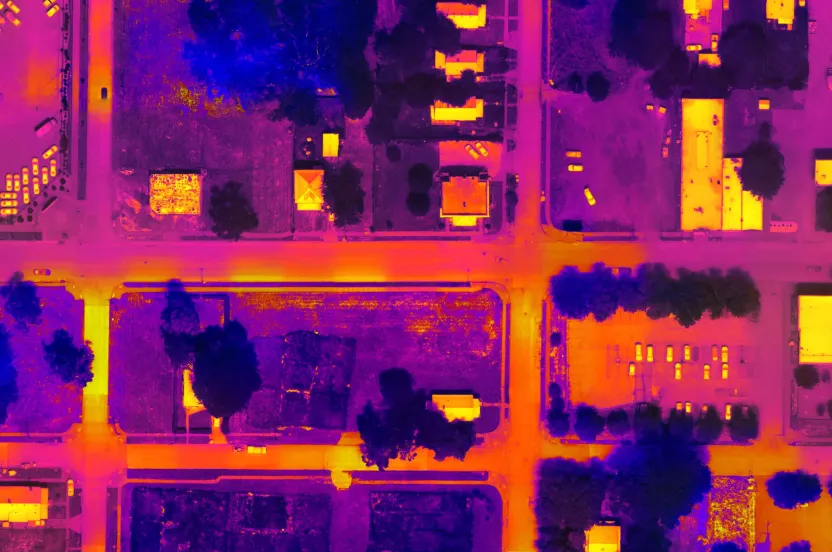Give before midnight on July 31 to double your impact where trees need us most. CHOOSE A PROJECT
Cities Meet Mounting Urban Heat Challenges With Trees
Trees offer municipalities an affordable, effective tool to combat rising temperatures.
June 26, 2025
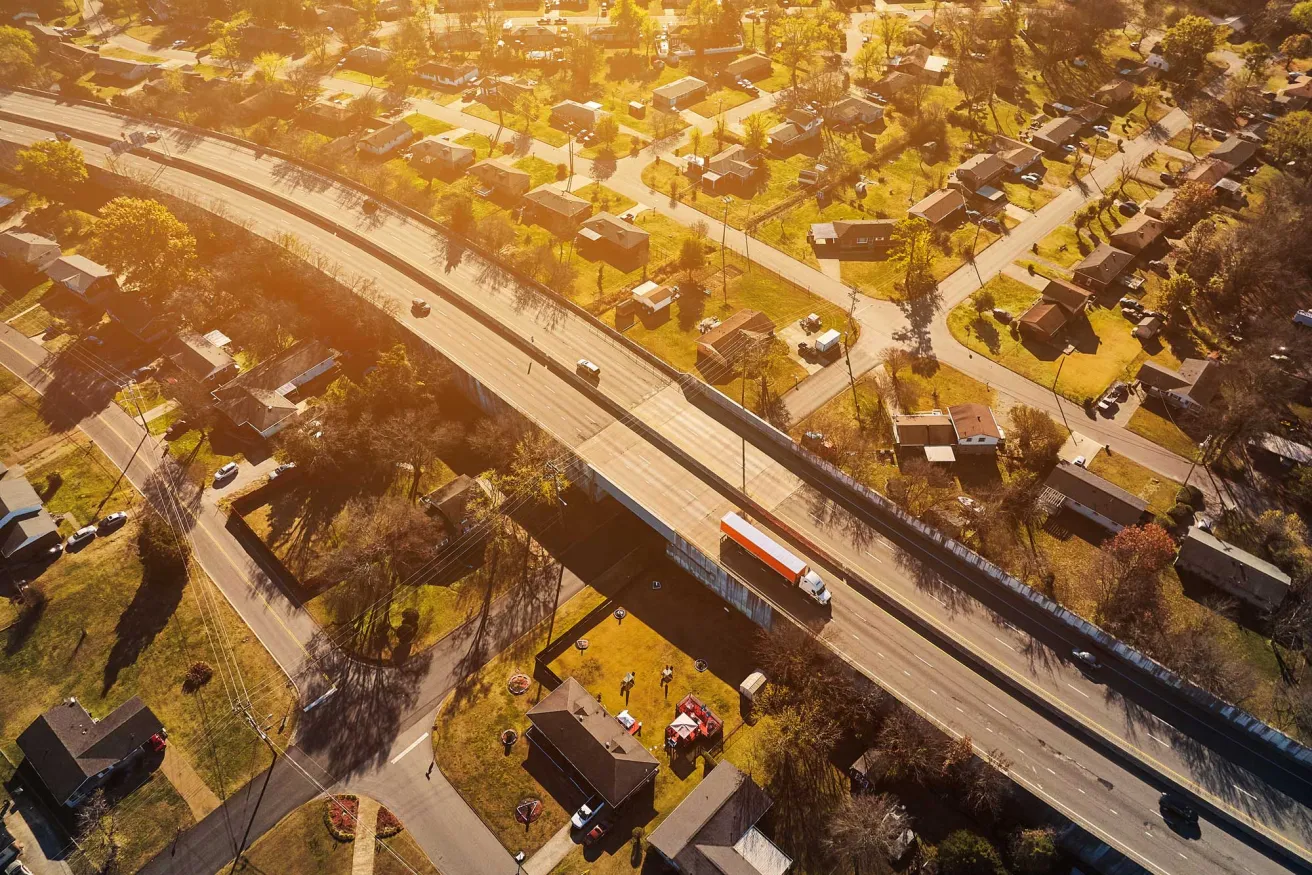
As our nation's cities are heating up, the safety shade can bring is oftentimes shrinking.
Across the United States, cities are heating up. Rising temperatures in the summer months are colliding with our country’s continued urban development growth to create a dangerous phenomenon known as the urban heat island effect — a condition where cities become significantly warmer than surrounding rural areas due to heat-absorbing surfaces like asphalt, concrete, and buildings.
This effect is not just uncomfortable, it’s a public health crisis, especially so for populations most vulnerable to extreme heat.
As cities across the U.S. grapple with the growing challenge of urban heat islands — while unquestionably facing unique local conditions — more municipalities are turning to a shared, affordable, and effective solution to cool their urban cores: trees.
The Growing Challenge of Urban Heat Islands
Urban heat islands form when natural landscapes are replaced with dense infrastructure that traps heat. It is a growing issue that does not appear to be going anywhere. More than half of the world’s population live in urban areas today and the U.N. expects that percentage to reach 70% by 2050. As cities swell in size, development replaces nature with impervious buildings, streets, and sidewalks.
Without sufficient tree canopy or green space to provide shade and cool the air, temperatures in some neighborhoods can be several degrees higher than in greener parts of the same city.
These elevated temperatures come with costs and drawbacks including increased energy demand, worsening air quality, and serious health risks.
While cities face different challenges unique to their individual circumstance, more cities are ringing the alarm on stifling heat and the problems it creates for its residents.
Chadwick Schroeder, sustainability coordinator for Bridgeport, Connecticut, says the city’s industrial legacy and abundance of impervious surfaces have made it especially vulnerable.
“We have neighborhoods where there’s no river nearby, but flooding still happens because there’s nowhere for the water to go,” he explains. “And when the heat comes, it’s compounded by poverty, poor air quality, and lack of green space.”
Nashville, Tennessee, faces a different but equally complex challenge. As one of the fastest-growing cities in the U.S., its rapid development has led to the loss of tree canopy and the displacement of long-time residents. “We’re seeing exponential growth,” says Kendra Abkowitz, Nashville’s chief sustainability and resilience officer. “But that growth often comes at the expense of green space, especially in low-income and minority neighborhoods.”
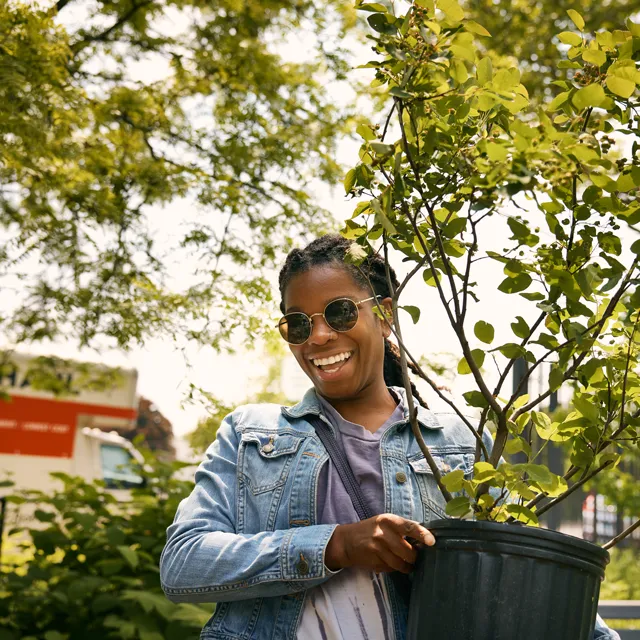
Growth, Budgets, and Balance
City leaders are often caught in a balancing act — managing limited budgets, navigating diverse stakeholder interests, and responding to development pressures that can unintentionally worsen environmental imbalance. In both Bridgeport and Nashville, officials acknowledge that while infrastructure and economic development are necessary, they must be pursued in ways that don’t sacrifice community health or environmental resilience.
“Development can be a double-edged sword,” Abkowitz says. “It’s a constant balancing act to make investments in communities that need them, but to do so in a way that feels responsible, genuine, and authentic to the community that lives there today.”
Schroeder adds that equitable planning must start with community involvement.
“We can’t just drop trees into neighborhoods and call it a solution. People need to be part of the process. That’s how we reforest Bridgeport — by giving people the power to shape their environment.”
Trees: A Proven, Affordable Solution
Among the many strategies cities can use to combat urban heat, trees stand out for their affordability, effectiveness, and broad appeal. Trees provide shade, reduce surface and air temperatures, absorb stormwater, improve air quality, reduce home energy costs, and boost mental health. They’re also one of the few public investments that rarely face community opposition.
“Trees are one of the most cost-effective solutions we have,” Schroeder says. “They grow, they clean the air, they manage water, and they create beauty and calm in neighborhoods that need it most.”
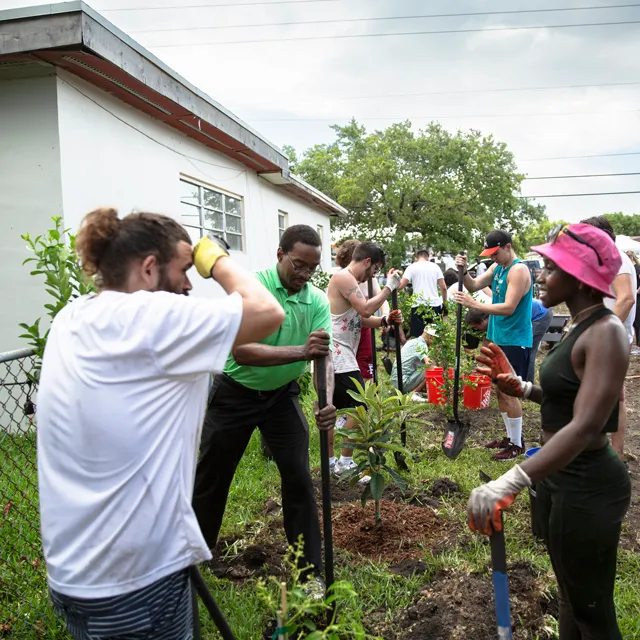
Trees are versatile, too, as they can be put to work not only in public rights-of-way but also in private yards. Through city-sponsored tree giveaways and distribution programs, municipalities can extend the cooling benefits of trees deep into residential areas, especially in neighborhoods identified through heat mapping as most vulnerable.
“When we look at all the options — cool roofs, reflective pavement, engineered infrastructure — trees consistently offer the best return on investment,” Abkowitz says. “And they come with co-benefits like increased property values and stronger community ties.”
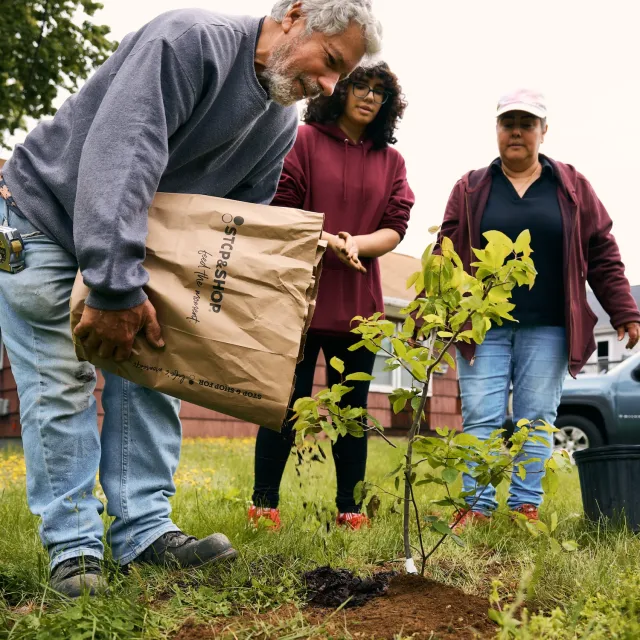
Providing Heat Relief with Trees
In Bridgeport, the city’s “Cool Corridors” initiative is transforming major pedestrian routes with street trees and reflective paint to create shaded, walkable pathways. The city also partners with the Arbor Day Foundation and local nonprofits like Groundwork Bridgeport to facilitate tree giveaways, empowering residents to plant trees on their own properties. The free trees and planting education get trees into yards where shade can have real economic benefits to the city and the homeowner in the form of lower energy costs.
“It’s about community empowerment,” Schroeder says. “Letting people choose where trees go builds ownership and pride.”
Nashville, meanwhile, has taken a data-driven approach. In a recent heat mapping project, more than 130 volunteers collected temperature and humidity data across 100 square miles of the city. The results confirmed what many suspected: underserved neighborhoods were the hottest and had the least tree cover.
Armed with this data, Nashville is prioritizing tree planting in those areas.
“We’re using the science to guide our strategy,” says Abkowitz. “And we’re doing it in a way that builds trust. Trees aren’t political. They’re something everyone can rally around.”
As cities across the country face the growing threat of extreme heat, Bridgeport and Nashville offer a hopeful blueprint. By investing in trees — not just as infrastructure, but as instruments of equity and community — they’re showing that community resilience can be rooted in something as simple, and powerful, as a seedling.
“We’re not just planting trees,” Schroeder says. “We’re planting hope, health, and a future where everyone has a place to cool down, breathe easy, and thrive.”
